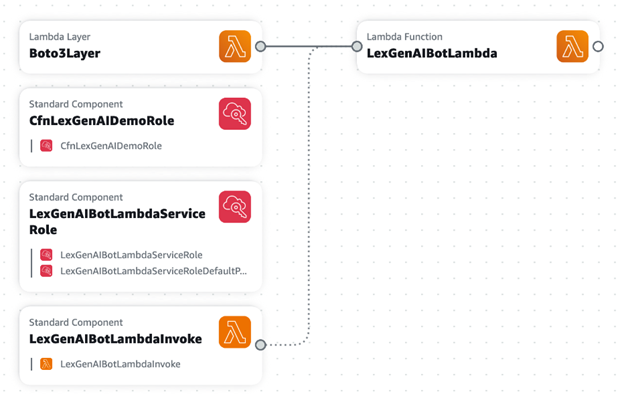AWS Compute Blog
Category: Artificial Intelligence
Serverless ICYMI Q1 2024
Welcome to the 25th edition of the AWS Serverless ICYMI (in case you missed it) quarterly recap. Every quarter, we share all the most recent product launches, feature enhancements, blog posts, webinars, live streams, and other interesting things that you might have missed! In case you missed our last ICYMI, check out what happened last […]
Generative AI Infrastructure at AWS
Building and training generative artificial intelligence (AI) models, as well as predicting and providing accurate and insightful outputs requires a significant amount of infrastructure. There’s a lot of data that goes into generating the high-quality synthetic text, images, and other media outputs that large-language models (LLMs), as well as foundational models (FMs), create. To start, […]
Using generative infrastructure as code with Application Composer
This post is written by Anna Spysz, Frontend Engineer, AWS Application Composer AWS Application Composer launched in the AWS Management Console one year ago, and has now expanded to the VS Code IDE as part of the AWS Toolkit. This includes access to a generative AI partner that helps you write infrastructure as code (IaC) […]
The attendee’s guide to the AWS re:Invent 2023 Compute track
This post by Art Baudo – Principal Product Marketing Manager – AWS EC2, and Pranaya Anshu – Product Marketing Manager – AWS EC2 We are just a few weeks away from AWS re:Invent 2023, AWS’s biggest cloud computing event of the year. This event will be a great opportunity for you to meet other cloud […]
Building a serverless document chat with AWS Lambda and Amazon Bedrock
This post is written by Pascal Vogel, Solutions Architect, and Martin Sakowski, Senior Solutions Architect. Large language models (LLMs) are proving to be highly effective at solving general-purpose tasks such as text generation, analysis and summarization, translation, and much more. Because they are trained on large datasets, they can use a broad generalist knowledge base. […]
Optimizing GPU utilization for AI/ML workloads on Amazon EC2
This blog post is written by Ben Minahan, DevOps Consultant, and Amir Sotoodeh, Machine Learning Engineer. Machine learning workloads can be costly, and artificial intelligence/machine learning (AI/ML) teams can have a difficult time tracking and maintaining efficient resource utilization. ML workloads often utilize GPUs extensively, so typical application performance metrics such as CPU, memory, and […]
Introducing Amazon CodeWhisperer in the AWS Lambda console (In preview)
This blog post is written by Mark Richman, Senior Solutions Architect. Today, AWS is launching a new capability to integrate the Amazon CodeWhisperer experience with the AWS Lambda console code editor. Amazon CodeWhisperer is a machine learning (ML)–powered service that helps improve developer productivity. It generates code recommendations based on their code comments written in […]
Building a low-code speech “you know” counter using AWS Step Functions
This post is written by Doug Toppin, Software Development Engineer, and Kishore Dhamodaran, Solutions Architect. In public speaking, filler phrases can distract the audience and reduce the value and impact of what you are telling them. Reviewing recordings of presentations can be helpful to determine whether presenters are using filler phrases. Instead of manually reviewing […]
Amazon EC2 DL1 instances Deep Dive
This post is written by Amr Ragab, Principal Solutions Architect, Amazon EC2. AWS is excited to announce that the new Amazon Elastic Compute Cloud (Amazon EC2) DL1 instances are now generally available in US-East (N. Virginia) and US-West (Oregon). DL1 provides up to 40% better price performance for training deep learning models as compared to […]
Build workflows for Amazon Forecast with AWS Step Functions
This post shows how to create a Step Functions workflow for Forecast using AWS SDK service integrations, which allows you to use over 200 with AWS API actions. It shows two patterns for handling asynchronous tasks. The first pattern queries the describe-* API repeatedly and the second pattern uses the “Retry” option. This simplifies the development of workflows because in many cases they can replace Lambda functions.









